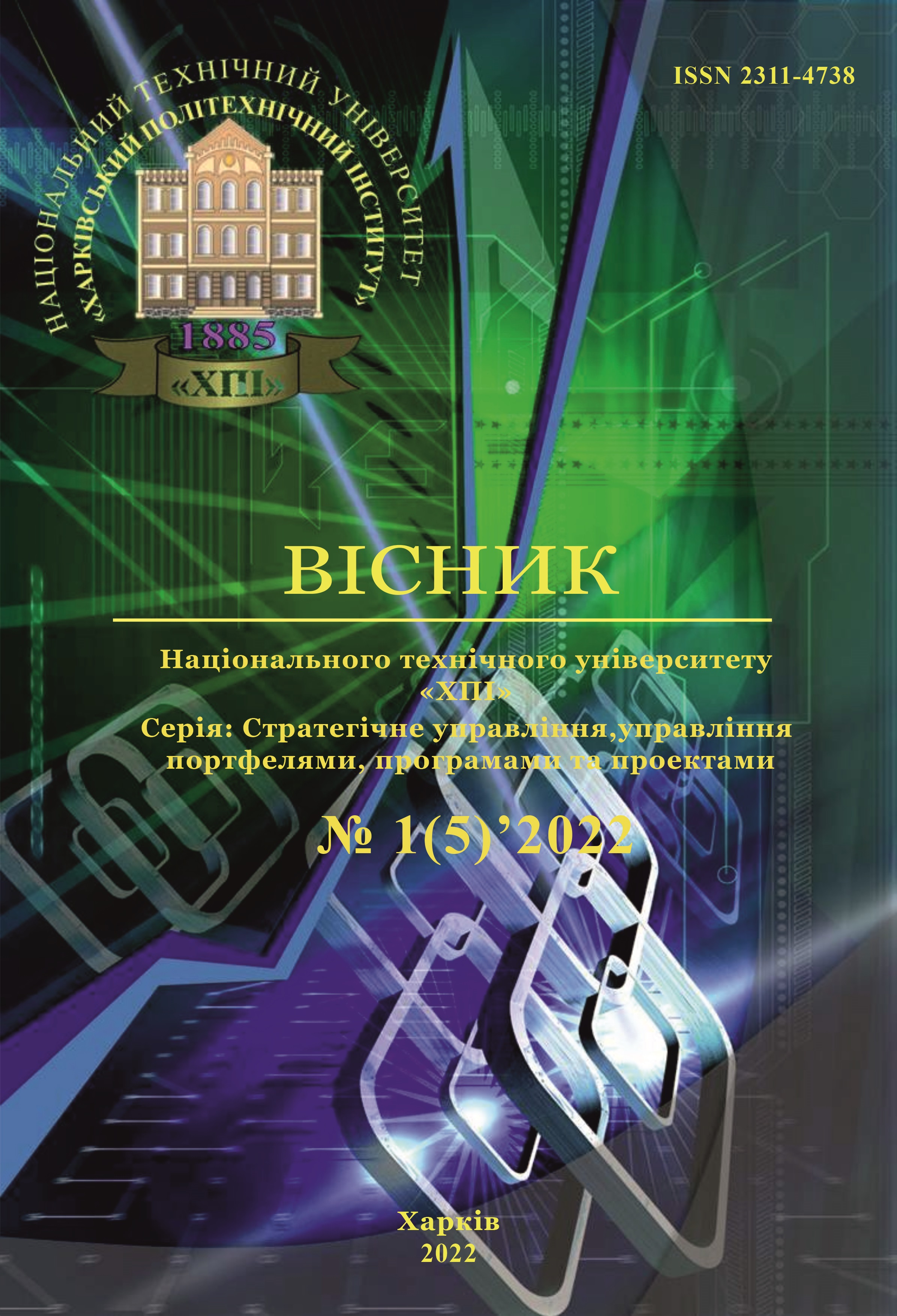THE SIMPLIFYING OF THE SOLUTION OF LINEAR OPTIMIZATION PROBLEMS IN PROJECT MANAGEMENT
DOI:
https://doi.org/10.20998/2413-3000.2022.5.10Keywords:
linear optimization; polyhedron; objective function; simplex method; basis vectors; original design; support design; polyhedron vertex; reduction; dualityAbstract
Modern mathematic models of project management processes description can be use in many cases to linear optimization problems. Simplification algorithms provide an efficient method of searching for solution of an optimization problem. If we project a multidimensional process onto a two-dimensional plane, this method will enable graphic visualization of the problem solution matrixes. A significant simplification of the algorithms for preparing the linear optimization problem in computer calculations can be achieved using the concept of duality in linear optimization problems. The linear optimization problem forms are equivalent. This can be achieved provided that transformation techniques are used to move from one form of tasks to another. To simplify the transformation of linear optimization problems, the transition from maximizing to minimizing the objective function is used. This research has proposed a method of simplifying the combinatorial solution of a discrete optimization problem. It is based on decomposition of the system representing a system of constraints of a five-dimensional initial problem into the two-dimensional coordinate plane. There was a model example considered for solving a five-dimensional linear optimization problem based on such projecting of a multidimensional space onto the two-dimensional one. The paper is concerned with construction of a chain of efficient algorithms to simplify the primary mathematic model of problem and realization its computer-aided calculation. Applied value of the proposed approach consists in using the scientific result for enabling the possibility to improve canonical methods of optimization problem solution and, respectively, for simplification of computer-assisted calculation.
References
Данциг Дж. Линейное программирование, его применение и обобщение. М., 1966. 600 с.
Канторович Л. В., Горстко А. Б. Оптимальные решения в экономике. М., Наука, 1972. 227 с.
Unger N., Dempe S. Lineare Optimierung. Wiesbaden, Springer, 2010. 142 s.
Гетманцев В. Д. Лінійна алгебра і лінійне програмування. Київ, Либідь, 2001. 250 с.
Багаєнко І. М. ,Григорків В.С., Бойчук М. В., Рюмшин М. О. Математичне програмування. Київ, 1996. 266 с.
Teschl Gerald, Teschl Susanne. Mathematik für Informatiker. Band 1: Diskrete Mathematik und Lineare Algebra. Berlin, Springer, 2008. 519 s. DOI: 10.1007/978-3-540-77432-7
Бугір М.К. Лінійна алгебра, лінійні моделі. К., Академія, 1998. 237с.
Гавурин М. К., Малоземов В. Н. Экстремальные задачи с линейными ограничениями. Л., 1984, 176 с.
Ашманов С. А. Линейное программирование. М., 1981. 304 с.
Сигал И.Х., Иванова А.П. Введение в прикладное дискретное программирование: модели и вычислительные алгоритмы. М., 2003, 240 с.
Романюк Т. П., Терещенко Т. О., Присенко Г. В., Городкова І. М. Математичне програмування. Київ, 1996. 312 с.
Степанюк В. В. Методи математичного програмування. Київ, 1984. 272 с.
Титов С.Д., Чернова Л.С. Вища та прикладна математика: Навч. посібник: У 2-х ч., Ч. 1., Харків, Факт, 2017. 336 с.
Chernov S., Titov S., Chernova Ld., Gogunskii V., Chernova Lb., Kolesnikova K. Algorithm for the simplification of solution to discrete optimization problems. Eastern–European Journal of Enterprise Technologies. 2018, № 3/4 (93), pp. 34 – 43. DOI: 10.15587/1729-4061.2018.133405
Downloads
Published
Issue
Section
License

This work is licensed under a Creative Commons Attribution-NonCommercial-ShareAlike 4.0 International License.
Our journal abides by the Creative Commons copyright rights and permissions for open access journals.
Authors who publish with this journal agree to the following terms:
Authors hold the copyright without restrictions and grant the journal right of first publication with the work simultaneously licensed under a Creative Commons Attribution-NonCommercial-ShareAlike 4.0 International License (CC BY-NC-SA 4.0) that allows others to share the work with an acknowledgement of the work's authorship and initial publication in this journal.
Authors are able to enter into separate, additional contractual arrangements for the non-commercial and non-exclusive distribution of the journal's published version of the work (e.g., post it to an institutional repository or publish it in a book), with an acknowledgement of its initial publication in this journal.
Authors are permitted and encouraged to post their published work online (e.g., in institutional repositories or on their website) as it can lead to productive exchanges, as well as earlier and greater citation of published work.

